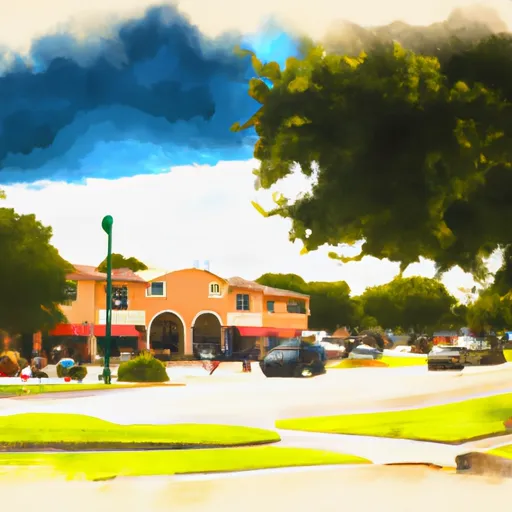-
 Snoflo Premium
Snoflo Premium
Get unlimited access to all our content
With no Ad interruptions! - Start Your Free Trial Login with existing account
Alford
Eden Index
Climate
7.4
•
Recreation
4.1
•
Community
•
Safeguard
4.4/10

Alford, Florida is located in the northern part of the state and has a humid subtropical climate with hot summers and mild winters. The area is known for its abundant hydrology constituents, including numerous springs and streams that flow into the nearby Choctawhatchee River. Outdoor recreation opportunities are abundant in Alford, with nearby attractions including the Florida Caverns State Park and the Chipola River Water Management Area. Visitors can enjoy hiking, camping, fishing, and kayaking in the beautiful natural surroundings. Additionally, the town is home to several community parks, offering opportunities for picnicking and family-friendly activities.
What is the Eden Index?
The Snoflo Eden Index serves as a comprehensive rating system for regions, evaluating their desirability through a holistic assessment of climate health, outdoor recreation opportunities, and natural disaster risk, acknowledging the profound impact of these factors on livability and well-being.
Climate Health Indicator (CHI): 7.4
Alford receives approximately
1498mm of rain per year,
with humidity levels near 87%
and air temperatures averaging around
19°C.
Alford has a plant hardyness factor of
8, meaning
plants and agriculture in this region tend to thrive here all year round.
By considering the ideal temperature range, reliable water supplies, clean air, and stable seasonal rain or snowpacks, the Climate Health Indicator (CHI) underscores the significance of a healthy climate as the foundation for quality living.
A healthy climate is paramount for ensuring a high quality of life and livability in a region, fostering both physical well-being and environmental harmony. This can be characterized by ideal temperatures, reliable access to water supplies, clean air, and consistent seasonal rain or snowpacks.
Weather Forecast
Streamflow Conditions
Apalachicola
Area Rivers
Apalachicola
Snowpack Depths
Apalachicola
Reservoir Storage Capacity
Apalachicola
Groundwater Levels
Recreational Opportunity Index (ROI): 4.1
The Recreational Opportunity Index (ROI) recognizes the value of outdoor recreational options, such as parks, hiking trails, camping sites, and fishing spots, while acknowledging that climate plays a pivotal role in ensuring the comfort and consistency of these experiences.
Access to outdoor recreational opportunities, encompassing activities such as parks, hiking, camping, and fishing, is crucial for overall well-being, and the climate plays a pivotal role in enabling and enhancing these experiences, ensuring that individuals can engage in nature-based activities comfortably and consistently.
Camping Areas
| Campground | Campsites | Reservations | Toilets | Showers | Elevation |
|---|---|---|---|---|---|
| Spring Villa Campground | 24 | 604 ft | |||
| St. Joseph Peninsula State Park | None | 7 ft | |||
| Florida Caverns State Park | None | 144 ft | |||
| Dead Lakes State Rec Area | None | 23 ft | |||
| Amity | None | 689 ft | |||
| Houston County Center | 63 | 326 ft | |||
| Chewacla State Park | None | 516 ft | |||
| Falling Waters State Park | None | 267 ft | |||
| Burnt Village | 120 | 687 ft | |||
| Blue Springs State Park | 50 | 306 ft |
Nearby Ski Areas
Catastrophe Safeguard Index (CSI):
The Catastrophe Safeguard Index (CSI) recognizes that natural disaster risk, encompassing floods, fires, hurricanes, and tornadoes, can drastically affect safety and the overall appeal of an area.
The level of natural disaster risk in a region significantly affects safety and the overall livability, with climate change amplifying these risks by potentially increasing the frequency and intensity of events like floods, fires, hurricanes, and tornadoes, thereby posing substantial challenges to community resilience and well-being.
Community Resilience Indicator (CRI):
The Community Resilience Indicator (CRI) recognizes that education, healthcare, and socioeconomics are crucial to the well-being of a region. The CRI acknowledges the profound impact of these elements on residents' overall quality of life. By evaluating educational resources, healthcare accessibility, and economic inclusivity, the index captures the essential aspects that contribute to a thriving community, fostering resident satisfaction, equity, and social cohesion.

